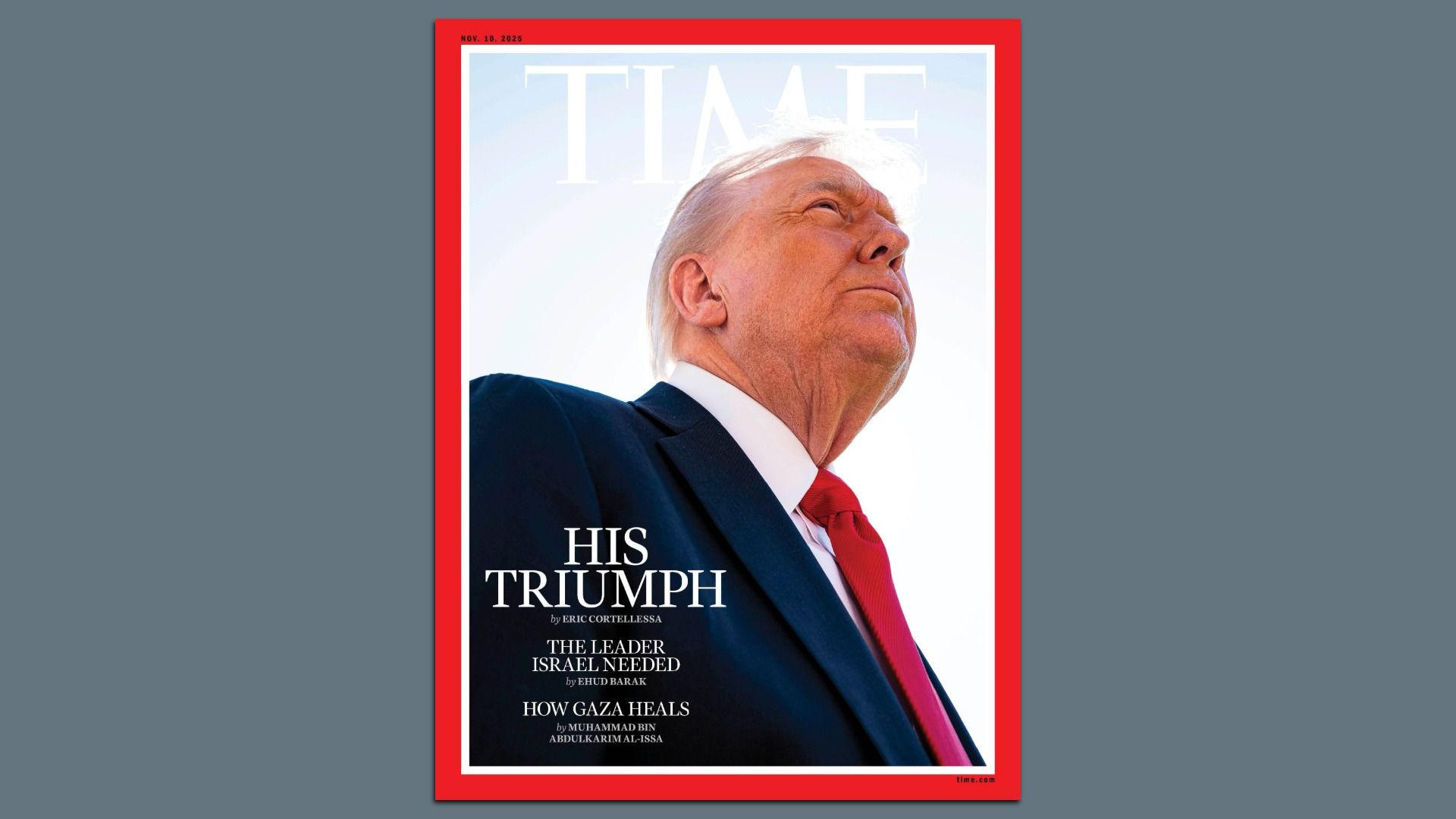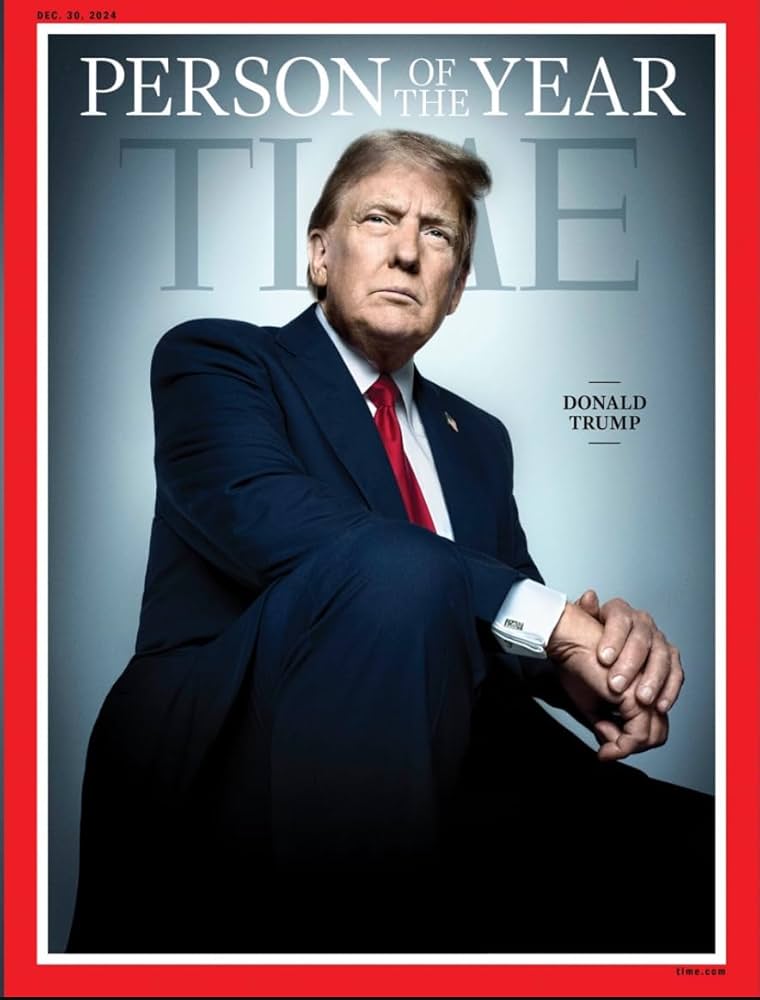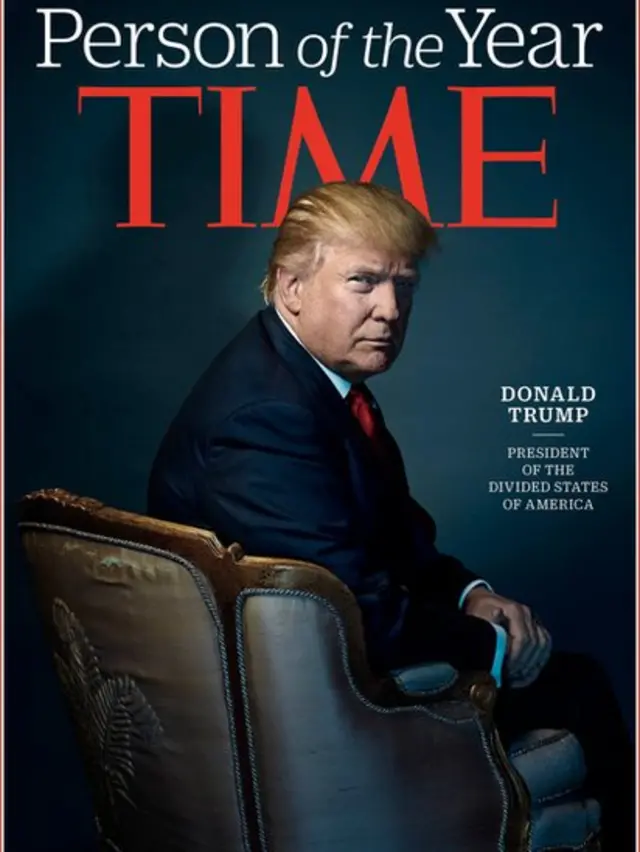Trump Criticizes Time Magazine Cover Photo: "Worst of All Time" Declaration
Trump Criticizes Time Magazine Cover Photo: "Worst of All Time" Declaration

The Controversial Time Magazine Cover
In the early morning hours of Tuesday, October 14, 2025, President Donald Trump took to Truth Social to express his displeasure with Time magazine's November 10 issue cover photo. The cover, which headlines "His Triumph" and celebrates Trump's role in brokering the Gaza ceasefire deal, features a photograph taken from a low angle with dramatic backlighting that creates an unusual halo effect around the president's head.
"Time Magazine wrote a relatively good story about me, but the picture may be the Worst of All Time," Trump wrote on his social media platform. "They 'disappeared' my hair, and then had something floating on top of my head that looked like a floating crown, but an extremely small one. Really weird!"
What Makes This Photo Controversial?
The photograph in question was shot from below at an unusual angle, with the sun positioned directly behind Trump's head. This technique created several visual effects that the president found objectionable:
- Hair Visibility: The backlighting made Trump's hair appear to blend into the bright background, creating what he described as a "disappearing" effect
- Crown Illusion: The halo of light around his head resembled a small floating crown, which Trump called "extremely small" and "really weird"
- Unflattering Angle: The low camera position emphasized Trump's chin, neck, and provided an unusual perspective of his facial features
:max_bytes(150000):strip_icc():focal(741x387:743x389)/U.S.-President-Donald-Trump-101425-tout-5dc1b377d98948ebb8a91f009eb3452f.jpg)
The Story Behind the Cover: Trump's Gaza Triumph
Despite his criticism of the photograph, Trump acknowledged that Time's accompanying story was "relatively good." The cover story, written by correspondent Eric Cortellessa, focuses on Trump's instrumental role in securing the release of Israeli hostages held by Hamas and brokering a ceasefire deal after more than two years of conflict.
"The deal could become a signature achievement of Trump's second term," Cortellessa wrote, highlighting the potential historic significance of the peace agreement. The breakthrough came after 20 living hostages were freed following Hamas's October 7, 2023 attack, with Israel releasing approximately 2,000 Palestinian prisoners in exchange.
International Reactions
The controversy surrounding the photo extended beyond American borders. Russian Foreign Ministry spokesperson Maria Zakharova also criticized the cover on Telegram, calling the photo choice "astonishing" and suggesting that "only unhealthy people, people obsessed with malice and hatred — perhaps even freaks — could have chosen such a photo." This statement came amid Russia's attempts to appeal to the Trump administration during strained relations over the Ukraine conflict.

Trump's History with Time Magazine
This isn't the first time Donald Trump has appeared on Time magazine's cover, nor is it his first complaint about media portrayal. Trump has graced the magazine's cover numerous times throughout his political career:
- 2024 Person of the Year: Trump was named Time's Person of the Year, with editor-in-chief Sam Jacobs noting that "perhaps no single individual has played a larger role in changing the course of politics and history than Trump"
- February 2025: Featured an illustration of Trump clearing the Oval Office desk with the caption "He's Back"
- May 2025: A close-up portrait titled "Dealing with It"
- 2016: Previously won Person of the Year after his first presidential election victory
Political Trolling and Social Media Response
California Governor Gavin Newsom, known for his social media exchanges with Trump, reposted the Time cover photo on X (formerly Twitter) with Trump's neck area censored, adding another layer to the controversy. The incident demonstrates how political figures continue to use social media platforms for public sparring and satirical commentary.

Past Portrait Controversies
Trump's sensitivity to unflattering imagery isn't new. In March 2025, he complained about a portrait hanging in the Colorado State Capitol, calling it "purposefully distorted" despite artist Sarah A. Boardman's stated goal of creating an apolitical representation. The portrait was subsequently removed after Trump's public criticism.
The president has also made changes to his own official White House portraits. In June 2025, an updated version featured more dramatic lighting on a black backdrop instead of the traditional flag background, with Trump swapping his blue tie for a red one.
Understanding Presidential Image Control
Trump's reaction to the Time cover reflects a broader pattern of presidents seeking control over their public image. Throughout his career, Trump has maintained a keen interest in how he's portrayed in media, from preferring specific camera angles to criticizing unflattering photographs. This attention to visual presentation has been a consistent characteristic of his public persona.
Photography Angles and Presidential Portraiture
Presidential photography follows certain conventions to convey authority and dignity. Low-angle shots, which Time employed for this cover, can create dramatic effects but often deviate from the flattering perspectives presidents prefer. Traditional presidential portraits typically use eye-level or slightly elevated camera positions to project confidence and approachability.
Frequently Asked Questions
Why did Trump criticize the Time magazine photo?
Trump objected to the low camera angle and backlighting effects that made his hair appear to "disappear" and created what he described as a small floating crown above his head. He stated he "never liked taking pictures from underneath angles."
What was the Time magazine cover story about?
The cover story focused on Trump's role in brokering the Gaza ceasefire deal and securing the release of Israeli hostages from Hamas captivity, calling it "His Triumph" and potentially a signature achievement of his second term.
How many times has Trump been on Time magazine's cover?
Trump has appeared on Time's cover multiple times throughout his political career, including being named Person of the Year in both 2016 and 2024, along with several feature stories during his presidencies.
Did Time magazine respond to Trump's criticism?
Time magazine did not immediately respond to requests for comment regarding Trump's criticism of the cover photo, maintaining their standard editorial independence.
What was the Gaza peace deal that prompted the cover story?
The peace agreement involved Israel's partial withdrawal from Gaza, Hamas releasing remaining hostages, and the exchange of approximately 2,000 Palestinian prisoners. The deal came after more than two years of conflict following Hamas's October 7, 2023 attack.
The Bigger Picture: Media Relations and Presidential Legacy
This incident illustrates the complex relationship between political leaders and media outlets in the digital age. While Trump praised the substantive content of Time's story about his diplomatic achievement, his focus on the visual presentation demonstrates how image control remains a priority for modern presidents navigating 24/7 news cycles and social media scrutiny.
The controversy also raises questions about editorial choices in photojournalism. Should magazines prioritize artistic or dramatic photography over more conventional flattering portraits? Time's decision to use an unconventional angle suggests editorial independence in visual storytelling, even when featuring powerful political figures.

Conclusion: Photography, Politics, and Public Perception
The Time magazine cover controversy serves as a reminder that in modern politics, visual representation matters as much as written content. President Trump's swift and public response to what he considered an unflattering photograph demonstrates the ongoing importance leaders place on controlling their public image, even when the accompanying narrative is positive.
As the Gaza peace deal continues to unfold and potentially becomes a defining achievement of Trump's second term, the focus on the cover photograph rather than the diplomatic accomplishment itself reveals the power of imagery in shaping public discourse. Whether Time's artistic choice was intentional commentary or simply an unconventional editorial decision, it has certainly generated attention and conversation far beyond the magazine's newsstands.
Found This Article Informative?
Share this story with your friends and followers to keep them informed about the latest developments in presidential media relations!